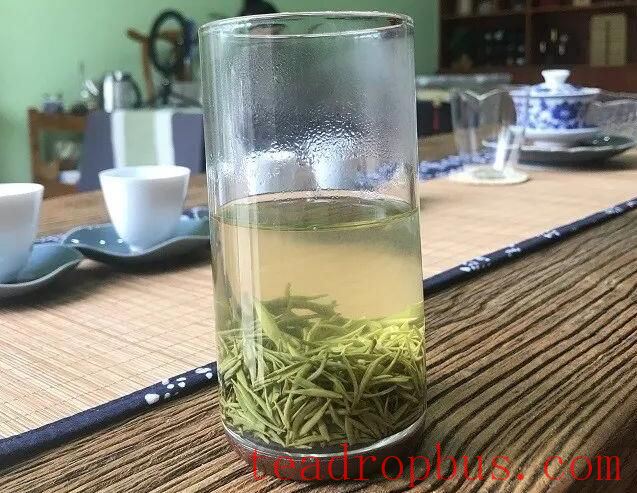Many people hastily form judgments about Xin Yang Mao Jian Tea after just one sip. If they find it bitter and astringent, they conclude it's not good, which is a misjudgment of the tea's “bitterness and astringency.”
In reality, those who truly understand tea do not judge its quality based solely on bitterness and astringency.
The bitter and astringent taste in Xin Yang Mao Jian tea is merely one aspect of its inherent flavor profile, always present but never dominant or constant.
A tea with a “bitter and astringent” taste is not necessarily bad; in fact, it can often be a sign of high-quality tea. The intensity of these flavors depends on the amount of bitter and astringent compounds present.
The primary substances responsible for the bitter taste in tea include: Caffeine, theobromine, theophylline, anthocyanins, tea saponins, bitter amino acids, and some flavanols.
Bitterness in tea often accompanies astringency and dominates the taste structure of the Brew.

In tea, alkaloids and large amounts of catechins form hydrogen-bonded complexes. In teas with relatively high levels of both catechins and caffeine, the liquor is rich, full-bodied, and refreshing, indicating high-quality tea.
The primary substances responsible for the astringent taste in tea are polyphenols (primarily catechins, phenolic acids, condensed phenolic acids), aldehydes, and iron, with catechins being particularly important.
Lipid-type catechins impart a strong bitter and astringent taste and are found in much higher concentrations in young shoots than in older leaves.
Under normal circumstances, teas made from tender buds and the first or second leaves have a more pronounced bitter and astringent taste compared to those made from buds and third or fourth leaves. Thus, Xin Yang Mao Jian teas with a “bitter and astringent” taste are often of high tenderness and grade, which explains why lower-grade teas have a lighter flavor.
In the case of Xin Yang Mao Jian tea, any tea with high tenderness, pronounced aged fragrance, and a light bitter and astringent taste is likely an aged tea. This is due to the long-term storage of the tea leading to the degradation and transformation of bitter and astringent compounds, resulting in a smoother taste.
Of course, there are other reasons that can cause bitterness in tea. Teas made from raw materials severely affected by pests and diseases often have a stronger bitter and astringent taste, sometimes even developing a “foul bitterness” or “fishy odor.”
This kind of bitterness can be clearly distinguished from the inherent bitterness of the tea itself.
Similarly, regardless of the quality of the tea, astringency is an inherent characteristic.
The astringency in tea is primarily due to the effect of polyphenols (mainly catechins, phenolic acids, condensed phenolic acids), aldehydes, and iron on the human palate.
Although bitterness and astringency are often discussed together, they belong to different taste categories.
Astringency is a sensation that is strongly felt yet difficult to describe, occupying a unique position in the world of taste. It is not quite “numbing” but has a slight numbing quality, not exactly bitter but similar to it. Astringency is like eating an unripe persimmon, creating a puckering sensation opposite to smoothness, with a contracting effect.
Among the various tastes in tea, astringency often occupies an unwelcome position, sometimes even considered less desirable than bitterness. Bitterness can help clear heat and detoxify, with the saying “good medicine tastes bitter.” However, astringency makes the tea hard to swallow, leaving a disagreeable taste. Therefore, tea makers often strive to remove astringency during tea production.
In the “kill-green” step of Tea processing, insufficient temperature or time can result in a significant “greenish astringency” in the tea. Through oxidation and polymerization, the astringency in the tea liquor may be significantly reduced.
A tea that is bitter and astringent is not necessarily bad, but a tea that quickly transforms this bitterness and astringency is definitely of high quality. Bitterness and astringency can serve as proof of the richness of the tea's internal components. When they dissipate quickly, it indicates good tea-making techniques. Therefore, one should not misunderstand the bitterness and astringency in tea but learn to appreciate and discern them, so as not to miss out on good teas.